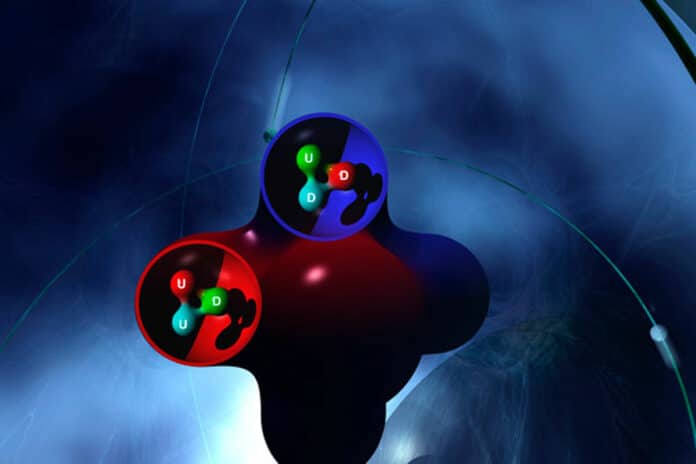Protons and neutrons reside inside the nucleus of an atom. They possess spin, an intrinsic characteristic that can point in one of two opposite directions, just as many other subatomic particles.
Scientists have known that protons are composed of fundamental particles called quarks and gluons, each of which has a distinct spin, since the 1960s. However, experiments in the 1980s revealed that quarks contribute only around 30% of the proton’s spin.
The fundamental question was then: where does the rest of the proton’s spin come from? Physicists searched for the source of the missing 70% of the proton’s spin.
Protons are made up of massless particles called gluons that hold quarks together. Teams working on PHENIX and STAR, a second RHIC experiment, discovered about seven years ago that gluon spin adds to the proton spin. However, they could not ascertain if the gluon spins aligned with the proton’s spin orientation.
This new analysis fills that gap. A gluon can change into a photon or a particle of light when protons collide. Direct photons are the type of photons generated by this mechanism. Because this phenomenon is so uncommon, it took 25,000 photon-measuring detectors for the PHENIX detector to detect.
Yasuyuki Akiba, a particle physicist at the RIKEN Brookhaven Research Center (RBRC), said, “It’s like the compound eye of an insect.”
In two different kinds of proton collisions, one in which the colliding protons had aligned spins and the other in which they had opposing spins, the physicists looked for the creation of direct photons.
When the initial proton spins were pointing in opposing directions, they observed a little increase in the production of direct photons. As a result, gluon spins can contribute to the proton’s spin as predicted because they point in the same direction as the proton’s spin.
Still, a mystery exists. A component remains lacking, as the computations indicate that gluon spins contribute just 20–30% to the proton’s spin. This may result from the motion of the quarks and gluons.
Akiba said, “They are building a new accelerator, called the Electron-Ion Collider at Brookhaven, which could provide the answer.”
Journal Reference:
- N. J. Abdulameer, U. Acharya, A. Adare, et al. Measurement of Direct-Photon Cross Section and Double-Helicity Asymmetry at √s = 510 GeV in →p + →p Collisions. Physical Review Letters. DOI: 10.1103/PhysRevLett.130.251901
